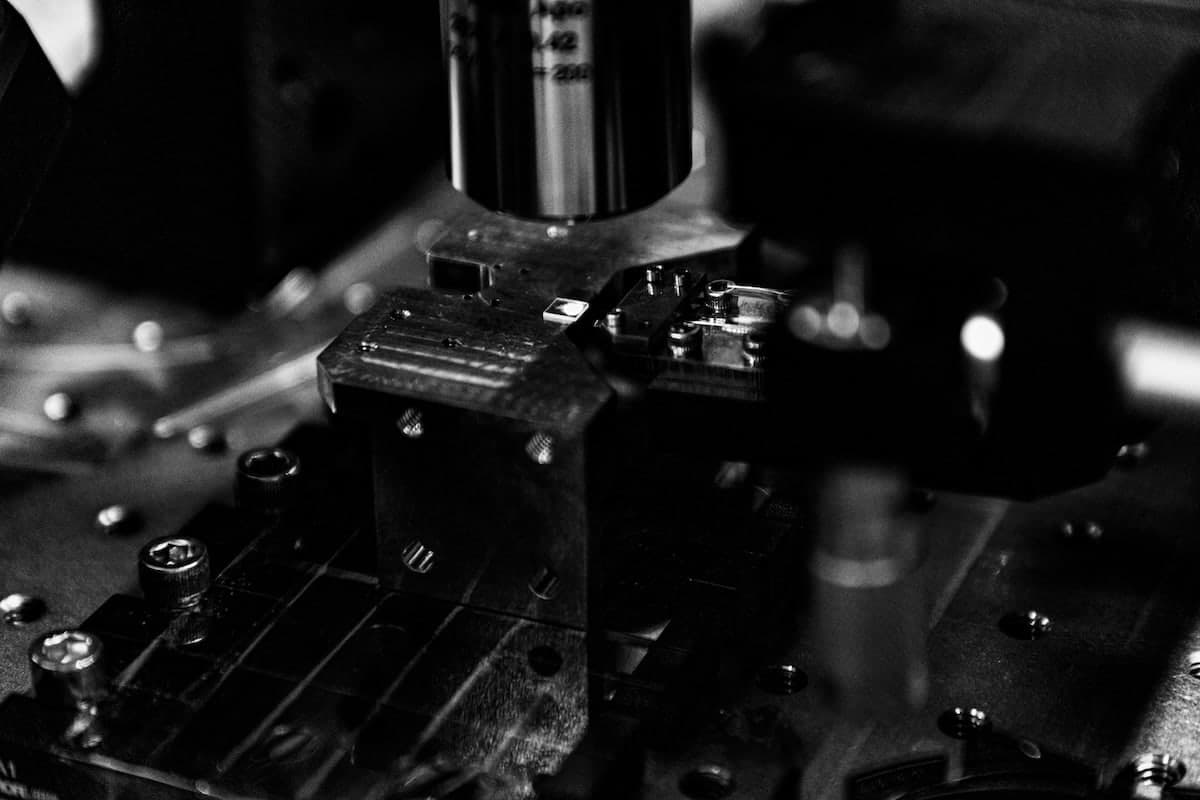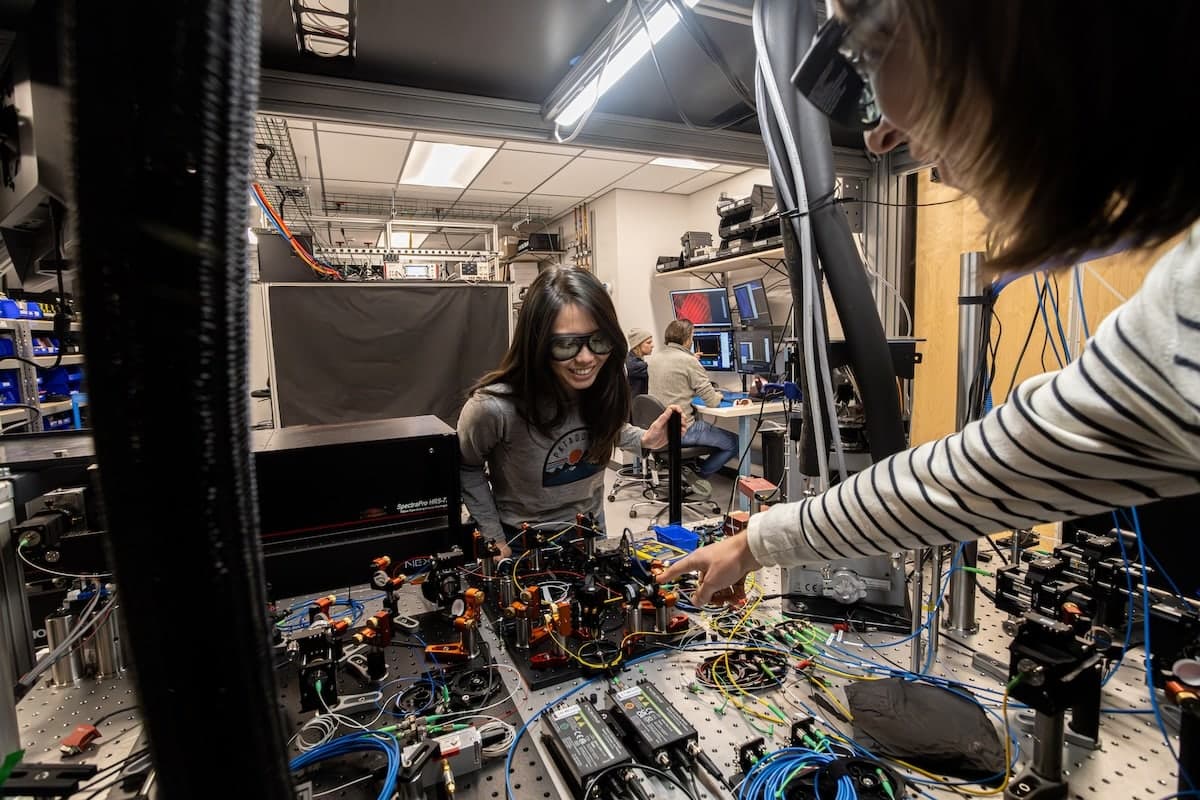Why We Founded Lightsynq
by The Lightsynq Team
Today, we are incredibly excited to launch Lightsynq. We founded the company with a clear mission: to build a technology that enables quantum computers to scale to commercially useful sizes. Quantum computing has transformative potential—from revolutionizing drug and material design to solving complex optimization problems across a wide variety of industries. And while quantum computing companies have made impressive strides toward these goals, particularly with recent advances in quantum error correction, these systems still face substantial scale-up challenges before they can reach their full potential. This is where Lightsynq comes in.
Solving the Scaling Problem with Quantum Interconnects
Our solution? Quantum interconnects that can link several limited-scale devices into a modular, full-scale quantum computer—just like the methods used to build high-performance computing systems today. Our approach, built out of years of research carried out by our founding team, uses quantum memories based on color centers in diamond, a technology with critical enabling capabilities such as heralding and in-memory computing. Crucially, our interconnects do not require disruptive redesigns of existing quantum hardware. They are designed to be compatible with quantum devices across various platforms, from atoms, ions, and photons to superconducting circuits with optical interfaces. This allows us to accelerate the quantum industry's timeline to commercial impact without having to pick a winning approach while the race is still heating up.
The most important benchmark for a quantum interconnect is that a network performs better with the interconnect than without it. In the pursuit of useful, large-scale quantum computing, nothing else matters.
This is where Lightsynq has an advantage over other approaches: our founding team has already used this technology to show the first-ever memory-enhanced quantum link based on color-centers in diamond photonic circuits—demonstrating that the link works faster with our memories, than without. It's not just the individual specs of our hardware—which we describe below and are field-leading in their own right—but also our proven capability to build a performant, end-to-end system around it, all in one scalable package, that makes Lightsynq's technology such an exciting approach for building useful quantum interconnects.
Below, we dive a bit deeper into some of the elements that make this system-level performance possible.
What is a Diamond Color Center Quantum Memory?
The biggest obstacle in connecting quantum computers is the network loss in extracting quantum information out of computing modules. Quantum memories are the only known approach for building loss-tolerant connections. Our quantum memories are created by embedding silicon atoms into diamond to form silicon vacancy color centers (SiVs): two-qubit registers, which are fully controllable using microwave pulses. SiVs have high-quality optical transitions for rapid qubit initialization and readout. Our technology goes further by placing SiVs in optical cavities to achieve high-fidelity, high-efficiency interactions between single photons and the SiV's electron qubit. All of this is implemented in a photonic integrated circuit (PIC), enabling us to scale to many parallel memory registers in a single, compact chip.

Image of a Lightsynq diamond photonic integrated circuit located under a microscope. Each diamond chip can host several hundred quantum memory channels in parallel.
Why Diamond-Based Memories are the Right Choice
Building quantum interconnects around diamond-based PICs offers important advantages that make them ideal for connecting quantum computers. We can perform universal quantum logic operations on our quantum memory register, enabling in-memory Bell-state measurements for entanglement swapping—a step other technologies often struggle with due to inherent inefficiencies when using linear optics for Bell-state measurements. Another key feature is "heralded" memory operation, which automatically detects the successful storage of a photon in the memory, allowing us to establish connections with high fidelity despite the large losses associated with extracting photons from a quantum computer. Finally, the broad acceptance bandwidth of the SiV's optical interface means we can work with photons from diverse quantum hardware platforms, ranging from narrow-bandwidth atoms and ions to more broadband solid-state systems, allowing them to be linked without extensive modifications.
Lightsynq's Role in the Broader Quantum Computing Landscape
Quantum computing is advancing rapidly, with many promising technologies that each have their own strengths. However, all approaches need to scale rapidly to reach their full potential. Lightsynq enables quantum computing companies to concentrate on building powerful error-corrected systems, while our optical quantum interconnects provide the scaling pathway needed to reach commercial utility. As we expand our interconnect's capabilities, we also envision connecting quantum computers directly to end users and other devices over long-distance quantum networks. This could unlock new possibilities, like secure multi-party computation and quantum-assisted sensing, bringing us closer to a world transformed by quantum technologies.
What's Next for Lightsynq
We're thrilled about our journey in establishing Lightsynq, and to help achieve Lightsynq's mission, we've just closed an $18M Series A funding round led by Cerberus Capital Management, with participation from Murata Electronics North America Inc., IAG Capital Partners, Safar Partners, QVT, Element Six, and In-Q-Tel (IQT). We're excited to collaborate with our lead investor Cerberus, as well as our long-standing R&D partner Element Six, who will continue to support development of scalable diamond technology. We're grateful for the backing of all our investors, who share our vision of creating quantum interconnects that enable hardware providers to link quantum processors and overcome their scaling bottlenecks.

A snapshot of Lightsynq's quantum interconnect lab located at our headquarters in Boston, MA. We use cryogenic and optical test and measurement systems in this lab to validate the performance of our interconnect technology.
Our Series A funds will go directly toward building the first quantum interconnect prototypes, and we plan to use these to help leading quantum computing companies scale to multi-module systems for the first time. We're eager to bring this technology to the industry and to work with top quantum companies to accelerate scaling and unlock the full potential of quantum computing.
References & Links
For readers interested in diving into the technical aspects of our approach, we suggest the following papers as a starting point, co-authored by members of the Lightsynq team:
- Experimental demonstration of memory enhanced quantum communication. Nature, 2020
- Robust multi-qubit quantum network node with integrated error detection. Science, 2022
- Entanglement of nanophotonic quantum memory nodes in a telecom network. Nature, 2024
Finally, if you're building quantum computing hardware and interested in learning more about how Lightsynq can help you scale, we'd love to hear from you. You can follow our journey and get in touch at lightsynq.com or on our LinkedIn.